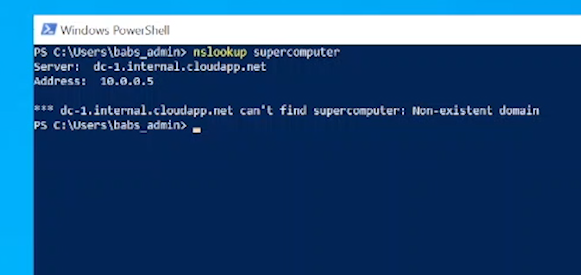Portfolio Project: Amechi Akpom
Exploring DNS Records and Cache:
A-Records, CNAME Records, and Local DNS Cache Management
In this DNS functionality demonstration, I examine DNS records and the local DNS cache through three hands-on exercises. Initially, I craft an A-record and watch its ripple effect on a client machine's DNS resolution. Then, I look at the local DNS cache, observing its role in DNS resolution. To round things up, I establish a CNAME record and note its influence on the client machine's DNS resolution. When finished, I have demonstrated DNS record management and cache as as indispensable tools for network management and diagnostic tasks.
Video Demonstration
Environments and Technologies Used
Microsoft Azure: A cloud computing platform by Microsoft that provides virtual machines and other resources.
Remote Desktop: A technology that allows users to access and control a computer or device from a remote location, as if they were physically present.
Internet Information Services (IIS): A web server software developed by Microsoft for hosting websites, applications, and other content on the internet or intranet.
Microsoft Active Directory: A directory service developed by Microsoft for Windows domain networks. It provides various network services such as authentication, authorization, and DNS services.
Domain Controller (DC): A server that responds to security authentication requests within a Windows Server domain. In this tutorial, we use DC-1 as the domain controller.
DNS (Domain Name System): A hierarchical and decentralized naming system for computers, services, or other resources connected to the internet or a private network. It translates human-readable domain names to IP addresses.
DNS Records: Data stored in DNS servers that contain information about domain names and their corresponding IP addresses. Examples of DNS records are A-records and CNAME records.
A-Record: An address record that maps a hostname to an IPv4 address.
CNAME Record: A canonical name record that maps one domain name (an alias) to another (the canonical name).
Command Prompt: A command-line interface available in most Windows operating systems. It allows users to execute commands and perform various tasks.
Ping: A utility that checks whether a particular host is reachable across an IP network. It measures the round-trip time for messages sent from the source host to a destination computer and back.
NSLookup: A network administration command-line tool available for many computer operating systems that helps obtain domain name or IP address mapping for any specific DNS record.
ipconfig: A command-line tool used on Windows operating systems to display the current network configuration, including IP addresses, subnet masks, and default gateways.
Hosts file: A plain text file in an operating system used to map hostnames to IP addresses. Its location in Windows is C:\windows\system32\drivers\etc\hosts.
Installation Steps
1. A-Record Exercise
Connect and log into your domain controller (DC-1) using your domain admin account (newroot.com\babs_admin)
Connect and log into your client machine (Client-1) using your domain admin account (newroot.com\babs_admin)
From Client-1, open the Command Prompt and execute ping www.amazon.com to ping www.amazon.com
Now, try to ping "supercomputer" and observe that it fails
Check the DNS cache using ipconfig /displaydns
Check the host file at C:\windows\system32\drivers\etc\hosts. You should not find any entry for "supercomputer"
Perform an NSLookup for "supercomputer" and observe that there is no DNS record (nslookup supercomputer)
Now, switch back to DC-1 and create a DNS A-record for "supercomputer" pointing to DC-1's private IP address
Return to Client-1 and try to ping "supercomputer" again. Observe that it works this time:
Perform an NSLookup for "supercomputer"
Check the DNS cache on Client-1 (ipconfig /displaydns or ipconfig /all)
2. Local DNS Cache Exercise
Go back to DC-1 and change the A-record for "supercomputer" to point to the IP address 8.8.8.8
Switch back to Client-1 and ping "supercomputer" again. Observe that it still pings the old address
Flush the DNS cache and observe that the cache is empty (ipconfig /flushdns)
Ping "supercomputer" again and observe that the new record's address is now showing up
3. CNAME Record Exercise
From Client-1, attempt to ping "search" and observe the results
Switch back to DC-1 and create a CNAME record that points the host "search" to "www.google.com"
Return to Client-1
Ping "search"
Flush the DNS cache and perform an NSLookup for "search" to observe the results of the CNAME record










